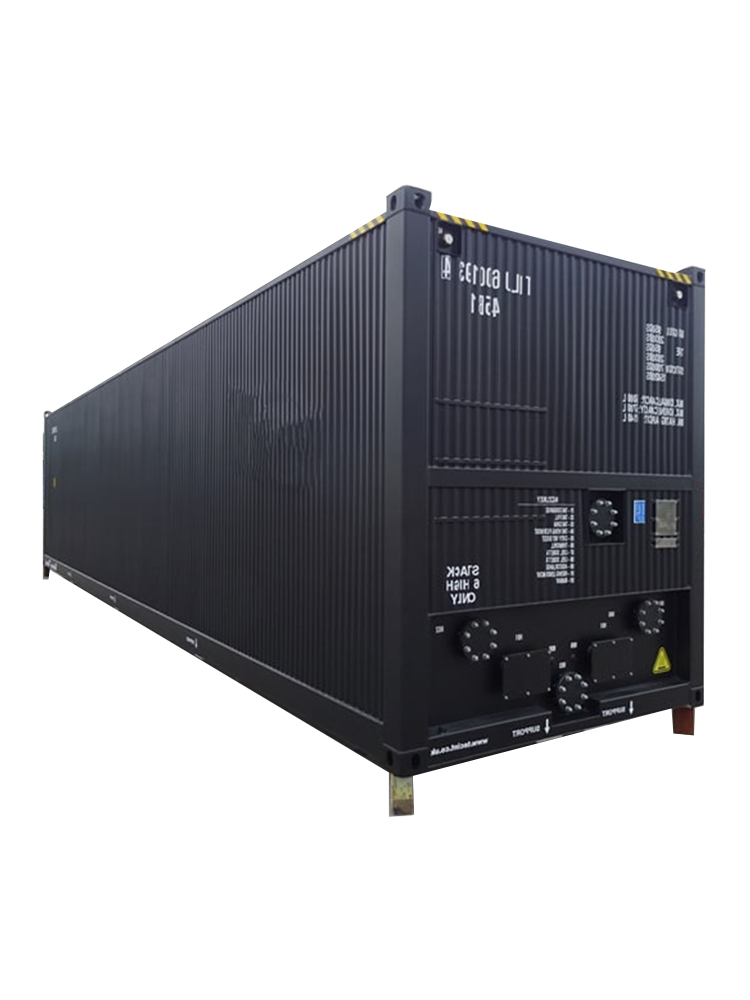.tg {border-collapse:collapse;border-spacing:0;}
.tg td{border-color:black;border-style:solid;border-width:1px;font-family:Arial, sans-serif;font-size:14px;
overflow:hidden;padding:10px 5px;word-break:normal;}
.tg th{border-color:black;border-style:solid;border-width:1px;font-family:Arial, sans-serif;font-size:14px;
font-weight:normal;overflow:hidden;padding:10px 5px;word-break:normal;}
.tg .tg-0pky{border-color:inherit;text-align:left;vertical-align:top}
| Specification | |
|---|---|
| Dimension | 6,058 mm x 2,438 mm x 2,591 mm |
| Payload | 22KL |
| Material | SUS 316L |
| Thickness | Tank Body:6mm; End Plate:6mm |
| Application | General purpose liquids |
| Application | Construction equipment, agricultural machinery, engineering and construction materials, wind power generation equipment |

Bitumen Tank Container
Designers created the tank container to facilitate the safe and efficient transport of bitumen from the production site or refinery to the location where it’s needed. For this purpose, the container’s construction complies with International Organization for Standardization (ISO) dimensions. Therefore, that allows it to be transported globally via multiple modes such as ships, rail, and road.
In addition to storage and transport, Bitumen Tank Containers can also distribute the bitumen directly at the site of application. Due to its discharge valve, this container can control the release of the hot, liquid bitumen.
Bitumen Tank Container features
Generally, A Bitumen Tank Container is a 20 or 40-foot long ISO container made up of an inner tank enclosed within a reinforced outer frame.
Firstly, an Inner Tank is something store the bitumen. We construct it from stainless steel or carbon steel. These are the materials known for their durability and resistance to corrosion, which is an essential characteristic given the corrosive properties of bitumen.
Secondly, we use high-strength carbon steel to construct outer frame. Its design can protect the tank and allows for easy handling, lifting. Therefore, it ensures security during transport.
–Insulation and Heating
Bitumen needs to be kept at high temperatures (150-200°C or 302-392°F) to remain fluid, hence the tank container features:
-Insulation: This is crucial to reduce heat loss. The tank is usually surrounded by a layer of insulating material such as rock wool or glass wool, ensuring that the bitumen remains hot and in a liquid state during transit.
-Heating System: This typically includes a network of heating coils or tubes running through the tank that circulate hot oil or steam, or electrical heating bands wrapped around the tank. This system heats the bitumen to the necessary temperature and keeps it in liquid form for pumping.
–Safety and Operational Features
-Pressure Relief Valve and Safety Valve: These are equipped to prevent the buildup of excessive pressure within the tank, ensuring safe operation.
-Discharge Valve: Located at the bottom of the tank, it allows for the controlled release or extraction of the bitumen.
-Manhole: A manhole is provided at the top for easy access to the interior for inspections, maintenance, or cleaning.
Temperature and Pressure Gauges: These devices are installed to monitor the temperature and pressure inside the tank, essential for safe and efficient operation.
FAQ of Bitumen Tank Container
Bitumen Tank Containers can vary in size depending on the manufacturer and model, but they usually come in standard international container sizes, such as 20 feet or 40 feet. Volumes typically range from 20,000 liters to 30,000 liters, depending on the design.
Bitumen Tank Containers are usually equipped with heating elements, such as electric heaters or steam heaters, to provide heat to heat the bitumen to the required temperature. At the same time, there is also insulation material inside the container, such as mineral wool or foam glass, to keep the temperature stable.
Transporting Bitumen Tank Containers requires compliance with international, national and regional regulations and standards. This includes transport safety regulations involving dangerous goods. Operators require specialized training to ensure correct operation and safety.








